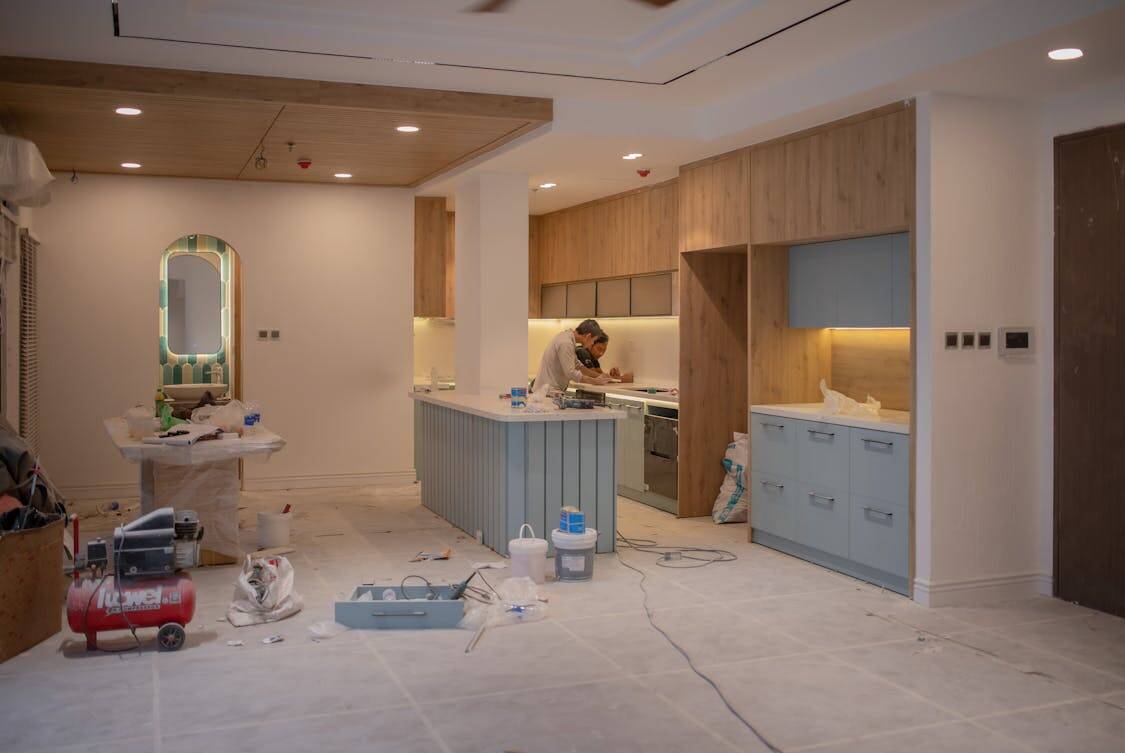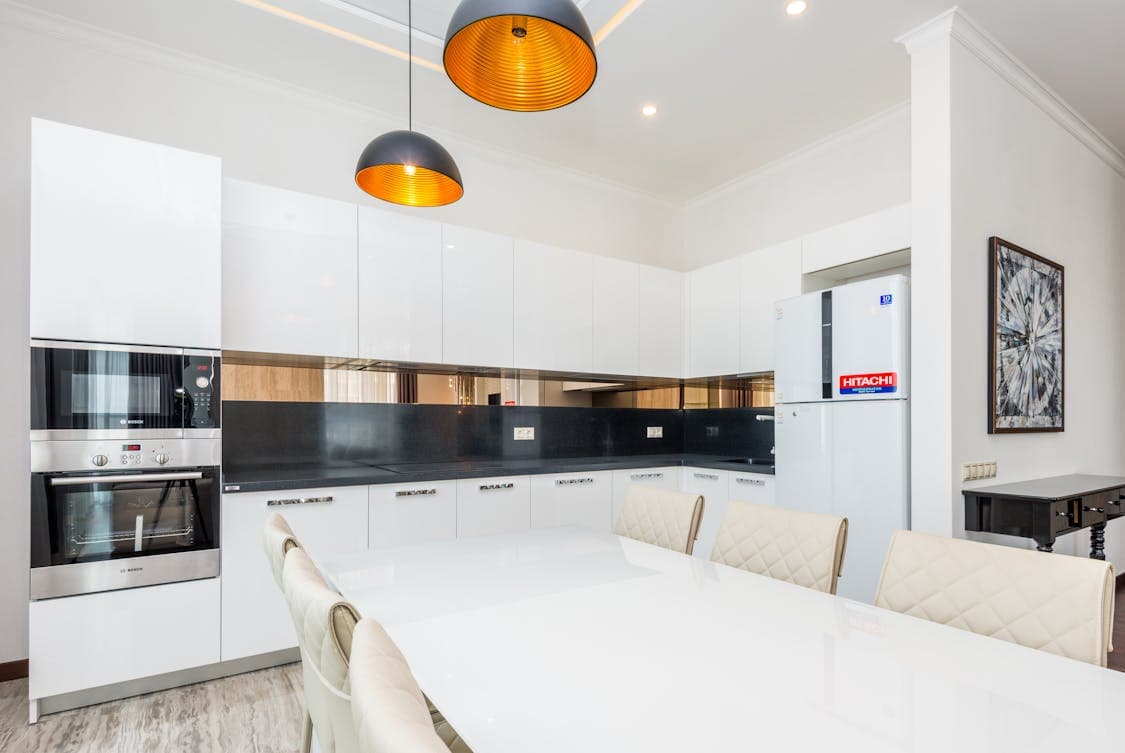Renovating a kitchen can be exciting, but it often comes with a mountain of debris and waste. When it’s time to remodel, understanding how to manage the resulting clutter is vital.
One effective method is opting for a dumpster rental. This article will walk you through how to efficiently utilize a dumpster rental during your kitchen renovation.
Assessing Your Needs
Before diving into the renovation project, take a moment to evaluate the scope of your kitchen remodel. Are you planning a full gut job or simply updating countertops and cabinets? This assessment will help determine the size of the dumpster you’ll need.
Smaller renovations may require only a 10 or 15-yard dumpster, whereas larger projects might necessitate a 20 or 30-yard container. Knowing this upfront saves time and money in the long run.
Choosing the Right Size
Selecting the correct size dumpster is a balancing act. If you underestimate your needs, you might find yourself scrambling to rent an additional dumpster mid-project. Conversely, renting one that’s too large can lead to unnecessary costs.
For kitchen renovations, a typical guideline is to start with a 20-yard dumpster for most extensive remodels. It strikes a balance between capacity and cost-effectiveness.
Finding a Reputable Rental Company
Once you’ve assessed your needs and chosen the appropriate dumpster size, it’s time to find a reliable rental company. Look for local providers with good reviews and transparent pricing.
A trustworthy company will communicate all terms clearly, including rental duration, delivery, and pickup schedules, as well as any additional fees that may apply. Don’t hesitate to ask questions; clarity is key.
Scheduling Delivery
After selecting a rental company, you’ll want to schedule the dumpster delivery at an optimal time. This could be the day before your renovation kicks off.
Having the dumpster on-site means you can start tossing out old materials immediately, keeping your workspace organized and efficient. When scheduling delivery, ensure there’s enough space for the dumpster and easy access for the delivery truck.
Preparing Your Space

Before the dumpster arrives, prepare your kitchen space. Clear out any items you can remove, such as appliances, utensils, and decor.
This not only makes it easier to access the areas being renovated but also allows you to sort through what to keep, donate, or discard. The less clutter you have during the renovation, the smoother the process will be.
What Can Be Disposed Of?
With the dumpster in place, it’s time to start loading it up. You can dispose of many common kitchen renovation materials, including old cabinets, countertops, flooring, and appliances.
If you’re replacing major appliances, make sure you’re prepared to deal with disposal needs after installing new kitchen equipment.
However, be mindful of the materials that may require special handling, like electronics and hazardous waste. It’s essential to check with the rental company regarding their disposal policies to avoid penalties.
Organizing Your Waste
As you toss items into the dumpster, consider organizing the waste. Place heavier items at the bottom and lighter materials on top. This not only maximizes space but also makes it safer to load and unload.
Another practical tip is to break down larger items, such as cabinets and appliances, before throwing them in. This reduces the volume of waste and helps you fit more into the dumpster.
Safety Precautions
When working on a kitchen remodel, safety should be top of mind. While you’re loading the dumpster, ensure you’re wearing protective gear. Gloves, safety glasses, and sturdy footwear can make a significant difference.
Be cautious with sharp objects like broken tiles or glass. Always lift with your legs, not your back, and don’t overload the dumpster to avoid accidents during pickup.
Timing Your Pickup
Once your renovation is complete, it’s time to schedule a pickup. Most companies allow you to set a specific date for the dumpster to be collected.
Be sure to communicate if you need an extension for any remaining waste. It’s always wise to give the rental company a heads-up on your schedule, avoiding any surprises.
Dealing with Leftover Waste
After your kitchen is completed, you might find that you have leftover items that didn’t fit in the dumpster. Consider eco-friendly disposal options, such as donating usable appliances or cabinets.
Many local charities accept these items, allowing you to give back to the community while decluttering your space.
Cost Considerations
Cost is an essential factor in any renovation project. Dumpster rental prices can vary widely depending on size, duration, and weight limits.
When budgeting, include not just the rental fee but also any potential overage costs for exceeding weight limits. Having a clear understanding of these costs will help you avoid surprises.
Utilizing the Space Efficiently
Do you have extra room in your driveway or yard? If so, position the dumpster strategically.
Keeping it close to the kitchen but out of the way can streamline your workflow. This arrangement allows for easy access while preventing obstruction to your project.
Communicating with Your Contractor
If you’re working with a contractor, keep lines of communication open regarding the dumpster rental. They can often provide valuable insights based on their past experiences.
If your contractor is familiar with specific disposal guidelines, their input can help streamline the process.
Environmental Responsibility
While tackling a kitchen remodel, think about your environmental footprint. Many rental companies promote recycling programs.
If you can, sort recyclables separately to minimize landfill waste. Reducing your impact on the environment during renovations is not only responsible but can also lead to a more sustainable lifestyle.
Managing Unexpected Issues
Every renovation comes with its surprises, and having a dumpster rental can help manage unforeseen issues.
If you discover additional waste materials or decide to take on more extensive work, having a dumpster on-site can make a significant difference. Being prepared for unexpected debris saves time and frustration.












